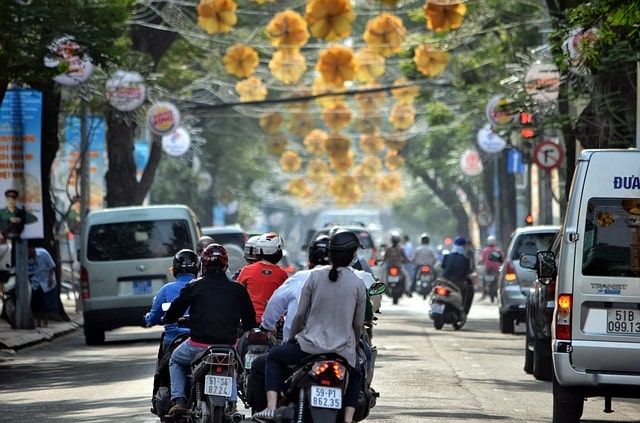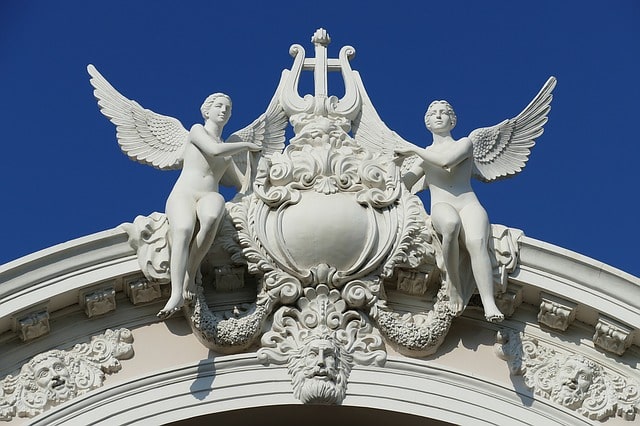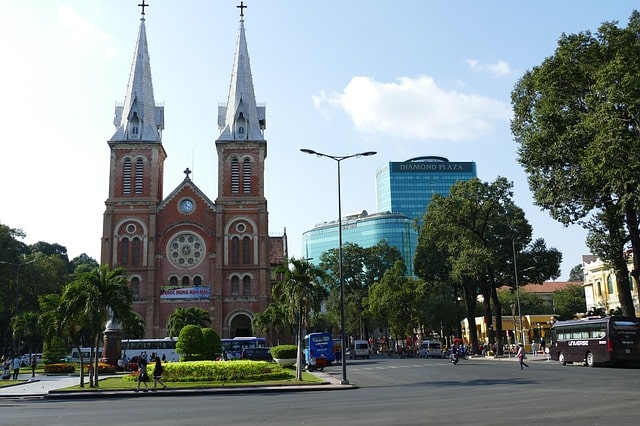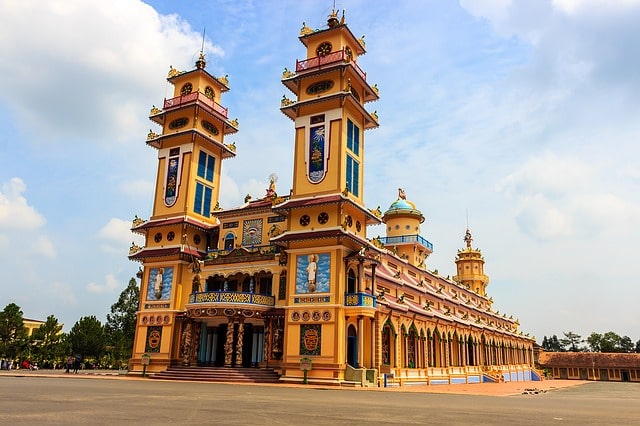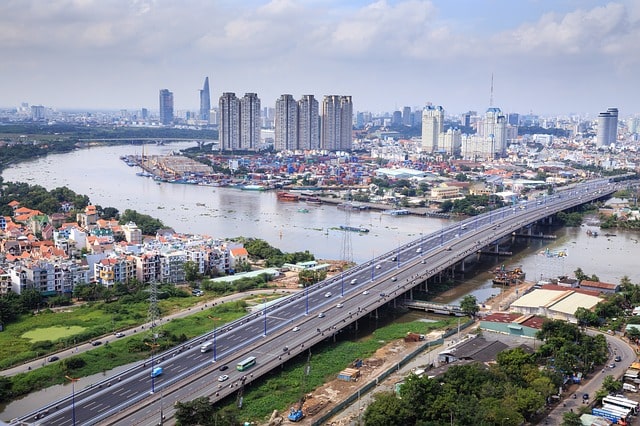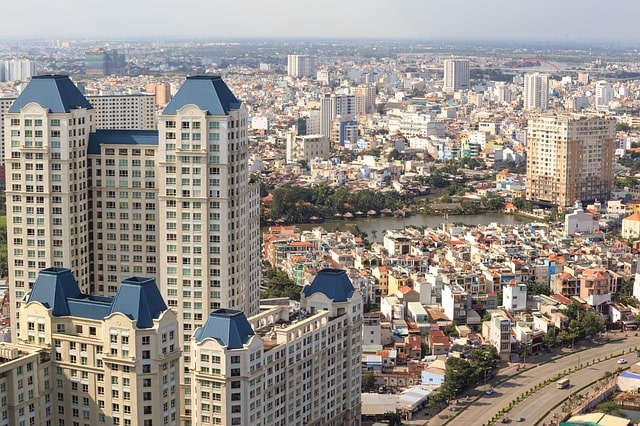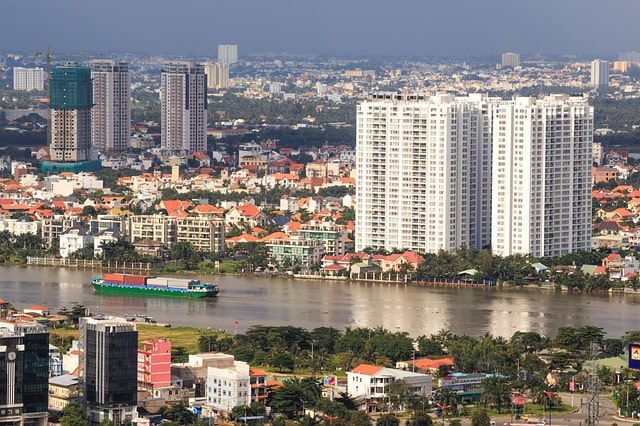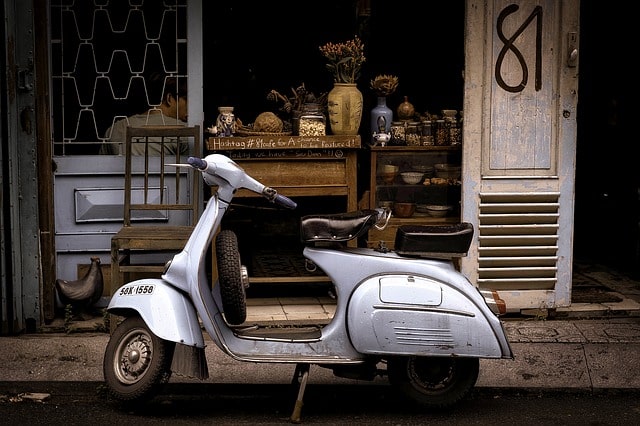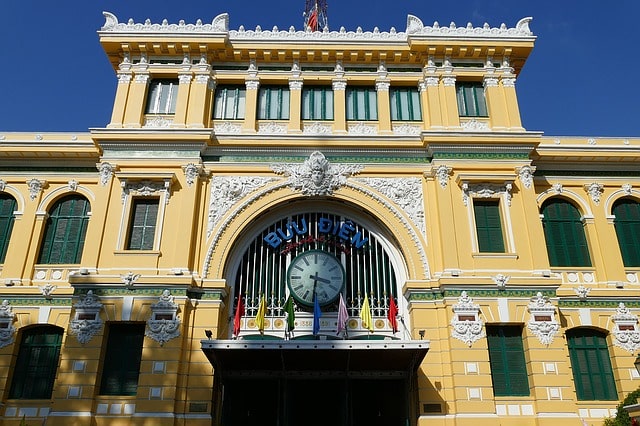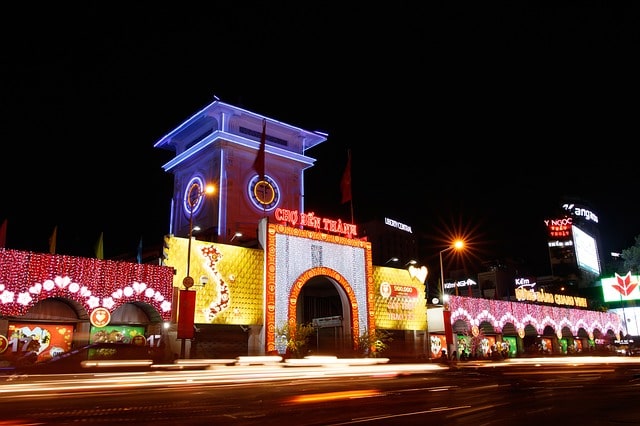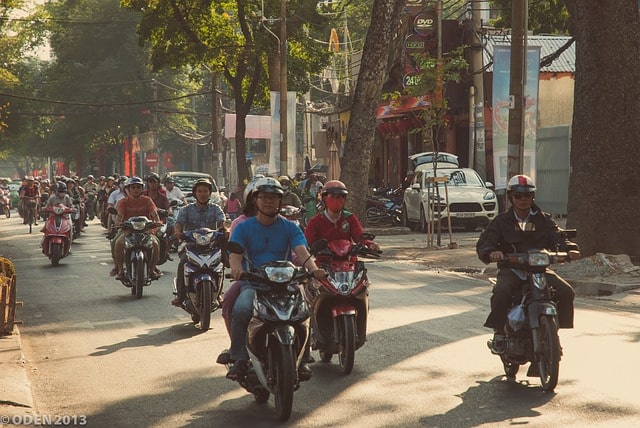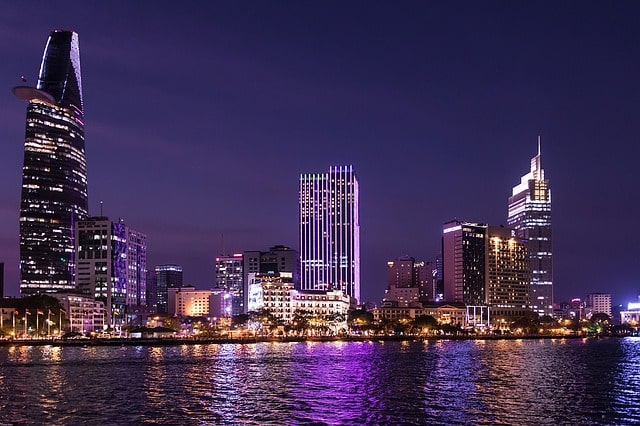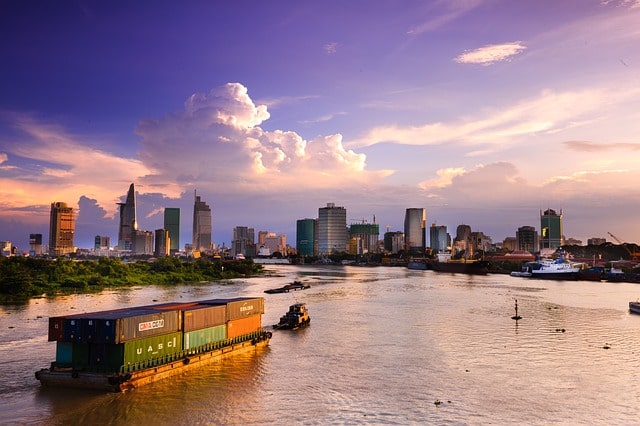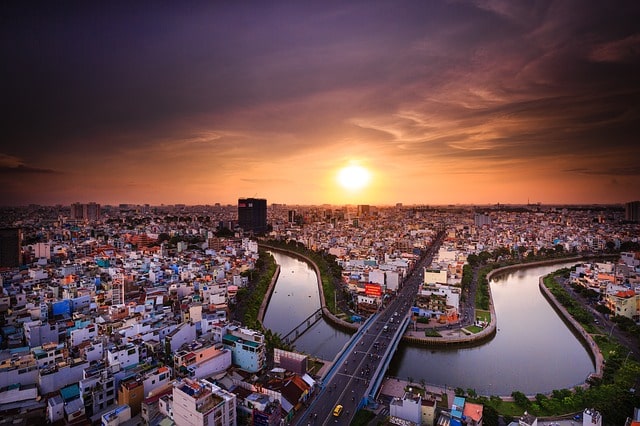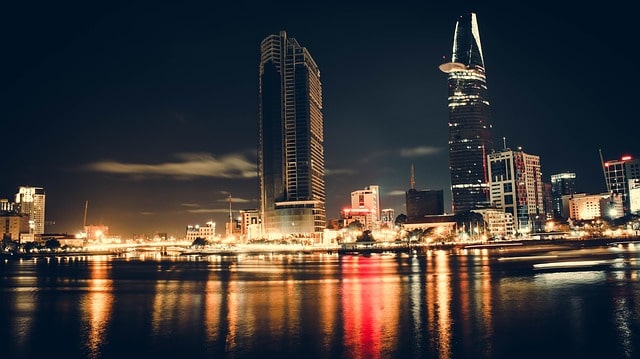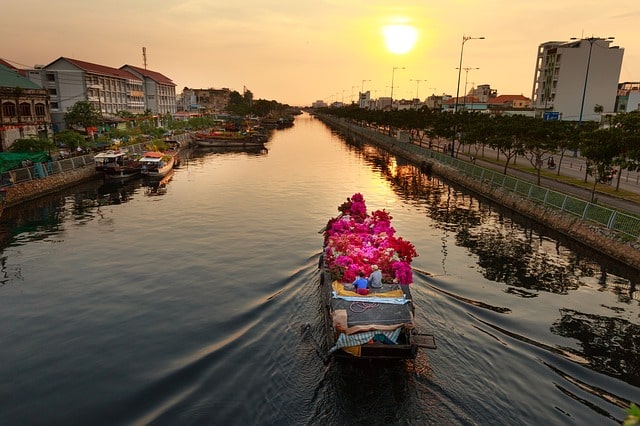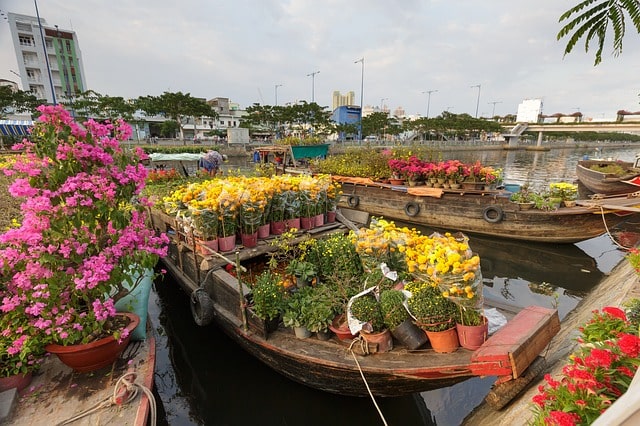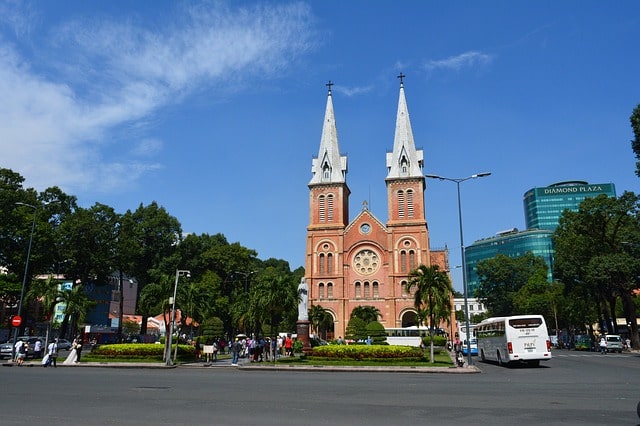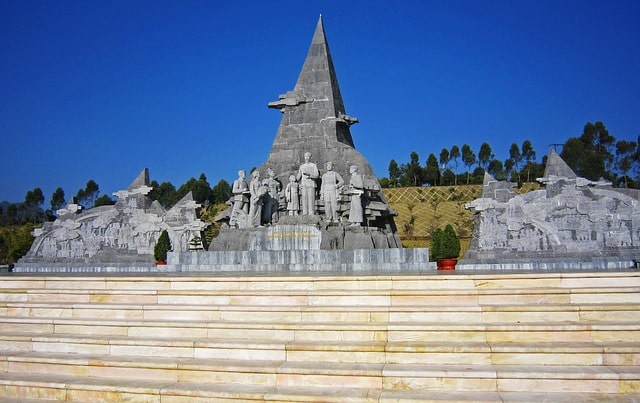Formerly called Saigon, Ho Chi Minh is one of the most important destinations in every trip through Vietnam. Former capital of the country, owes its current name to the famous leader and myth of the Vietnamese revolution Ho Chi Minh, key figure in the modern history of the country. Reflection of the historical colonial past of Vietnam, of the transformation to a socialist state and of the modernist future of the country, Ho Chi Minh is a destination that you should not miss in your trip.
Hồ Chí Minh
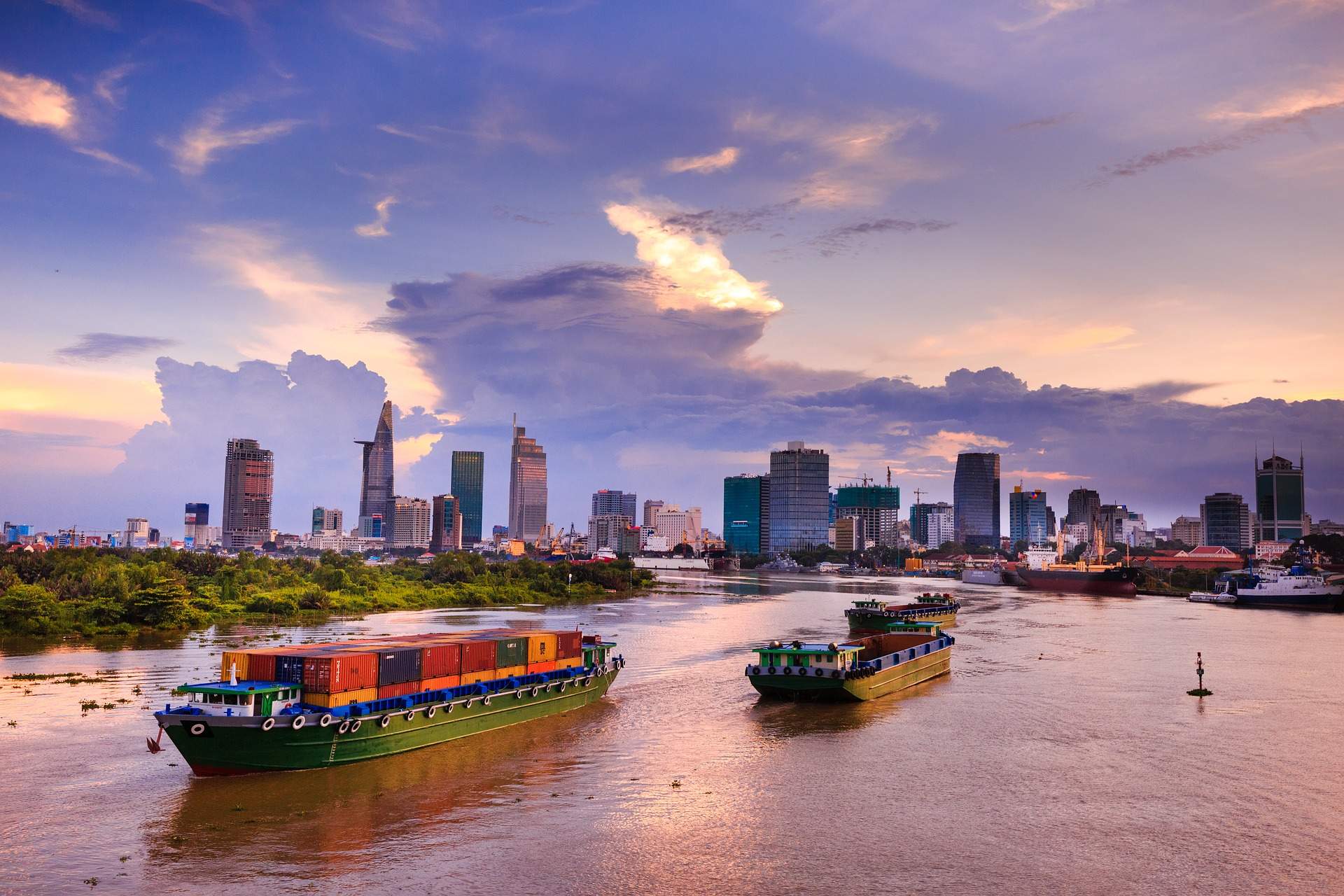
Hồ Chí Minh in Ho Chi Minh Municipality (Việt Nam)
Hồ Chí Minh guide
What to do in Hồ Chí Minh
Notre Dame Cathedral
The Cathedral of Notre Dam is one of the most important cathedrals in all of Southeast Asia, Built during the time of French rule, Notre Dame Cathedral stands out for its beauty and fine finishes being its most characteristic parts the 2 immense or high bell towers and the spectacular Statue of the Virgin Mary that is in the area of the entrance.
Opera house
Built in the late nineteenth century, the Palace or Opera House is another example we can find in Ho Chi Minh from the French colonial past and the importance that Saigon had in his time.
Central Post Office
Along with the aforementioned attractions, the Central Post Office allows us to get an idea of the French influence on the history of the country. The building is also famous for having been built by the great French architect Gustave Eiffel, builder of the famous Eiffel Tower in Paris.
The Pink Church of Tan Dinh
Together with the Notre Dame Cathedral, the Pink Church of Tan Dinh is another example of the Catholic past of the city and of the mixture of religions that exists in Vietnam. Classic style takes its name from the pinkish color of your entire exterior.
Giac Lam pagoda
One of the most important points within the Buddhist culture in Ho Chi Minh is the Giac lam Pagoda. Built in the mid-18th century, it is one of the oldest religious buildings in the city. The pagoda stands out for its Buddha images, especially that of its Great White Buddha sitting and its garden areas.
Jade Emperor's Pagoda
Built in the 19th century, the Pagoda of the Jade Emperor is another of the most important religious sites in the city. Its construction owes to the important Chinese community that has lived in this area of the country for centuries and is an example of the religious miscegenation that the city has. In the enclosure they emphasize especially their interiors where the different conceptions of the Taoísta religion are recreated.
War Museum
Ho Chi Minh houses the most important War Museum in all of Vietnam. In the museum you can appreciate the painful and long War of Independence that Vietnam fought against the French and North American colonialist states.
Palace of Reunification
Renowned as such to commemorate the reunification of the ancient North Vietnam and South Vietnam after the cruel civil war, the Reunification Palace is one of the country's prides and most recent anti-colonial history. Although its construction dates back to the 19th century, its current name is due to the reunification yearning that the Vietnamese always had after their colonial past.
Cu Chi tunnels
The Vietnam War can not be understood without knowing the role and sacrifice that the Vietnamese people who supported the communist north. Thanks to its audacity and to this network of tunnels, the Vietcong guerrilla (communist bases that had in the south of Vietnam) managed to take the war from the front to the same city of Saigon. The current attraction is to know the conditions of life and war that that guerrilla lived in the famous network of Tunnels of Cu Chi.
Ben Thanh Market
The Ben Thanh Market is the most important market in the city of Ho Chi Minh City. From morning to night at the Ben Thanh Market we can find all kinds of souvenirs and enjoy the incredible Vietnamese cuisine in its many small street restaurants.
Visit Pham Ngu Lao
Pham Ngu Lao is the backpacker neighborhood of Ho Chi Minh. Meeting point of the most alternative travelers who are touring Vietnam, Pham Ngu Lao is perfect to stay or to enjoy a night with its backpacker atmosphere.
Food in Hồ Chí Minh
As in the south grows a greater variety of tropical fruits and vegetables, and a wider variety of spices is used in their kitchen, which is why cooking in Ho Chi Minh is so aromatic and almost everything is cooked in coconut milk and they use more sugar in their recipes, even in the most salty dishes.
A typical dish of the city is the Thit Kho nuoc dua (Pork cooked simmered in coconut milk).
Sugarcane is abundant, and in addition to using it in the kitchen, they chew it as a sandwich or snack and drink their juice, just as we do here in our tropical countries
As for the kitchen cooking times are shorter, and heavy stews and fried dishes are less frequent than in the north.
Among the typical dishes of the city we also find the Bánh xeo of Indian cuisine influence and is like a dhosa, or large crepe stuffed with sweets like mango or coconut sweets and which the Vietnamese prepare with rice flour and milk of coconut, it is found in the evenings at street food stalls, also these crepes can be filled with meat and seafood, as well as vegetables.
Climate in Hồ Chí Minh
In Ho Chi Minh City, the wet season is overcast, the dry season is partly cloudy, and it is hot and oppressive year round. Over the course of the year, the temperature typically varies from 71°F to 94°F and is rarely below 67°F or above 97°F.
The best time of year to visit Ho Chi Minh City for hot-weather activities is from early December to late March.

 English
English
 Español
Español
 Français
Français
 Italiano
Italiano
 Português
Português
 Deutsch
Deutsch
 简体中文
简体中文
 Filipino
Filipino
 Bahasa Malaysia
Bahasa Malaysia
 日本語
日本語
 한국어
한국어
 ภาษาไทย
ภาษาไทย
 繁體中文
繁體中文
 हिन्दी
हिन्दी





















